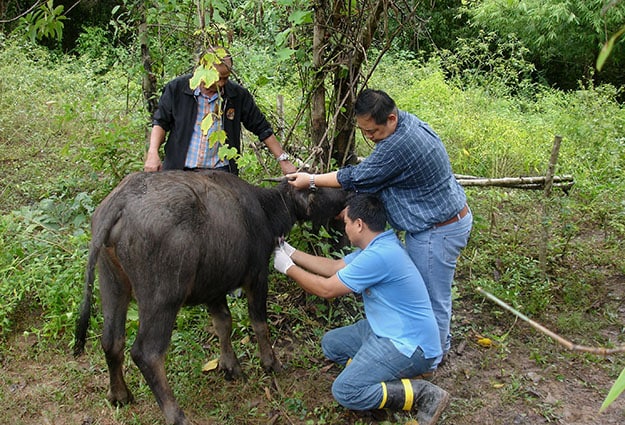Prioritizing and Preventing Deadly Zoonotic Diseases
February 28, 2018

Conducting laboratory disease testing on a waterfowl.
- 6 out of every 10 infectious diseases in humans are spread from animals
- 3 out of 4 new or emerging infectious diseases come from animals
- Zoonotic diseases are responsible for an estimated 2.5 billion cases of illness and 2.7 million deaths worldwide each year
Public Health Threat:
Diseases shared between animals and humans (zoonotic diseases or zoonoses) pose one of the greatest threats to our health, safety, and security.
Stopping the spread of zoonotic diseases requires a One Health approach that brings human, animal, and environmental health sectors together.
Response:
CDC led the development of the One Health Zoonotic Disease Prioritization tool to help countries with limited resources focus their most urgent global health security efforts. DGHP has supported 17 One Health Zoonotic Disease Prioritization Workshops across the globe, using the tool to help countries identify which zoonotic diseases are of greatest national concern.

FETP Investigators examining an animal for disease in Chiang Kong.
Workshop participants include a wide range of people who protect health—of people, animals, or the environment. Together, they select the country’s top five diseases to target for One Health collaborations. Commonly prioritized zoonotic diseases include rabies; influenza viruses; viral hemorrhagic fevers like Ebola virus and Rift Valley fever; brucellosis; and anthrax.
One Health teams then develop strategies to tackle the newly prioritized diseases. For example, having a rabies vaccination campaign for dogs can lead to fewer rabies deaths in people in a country.
Impact:
CDC is now working with disease experts in countries, using the prioritization tool to guide improvements in laboratory capacity, surveillance, outbreak response, and prevention activities for prioritized diseases. By building One Health capacities and strengthening partnerships, countries will more effectively address priority threats and respond to new and emerging zoonotic diseases.